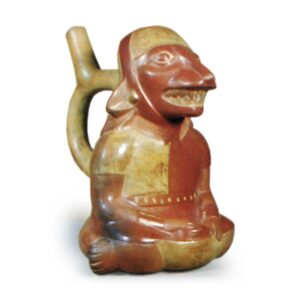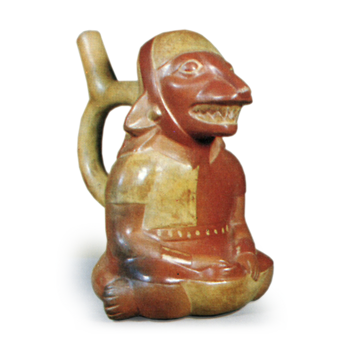
Earthenware developed in the northern Peruvian Andes following the Chavín culture. It is estimated to have lasted from the early A.D. to the 10th century. The decorative technique is of an extremely high level, with painted relief patterns in red and white, and later in black. Molding was done by stamping. The vases were flat-bottomed and often spherical or figurative, with armor-shaped spouts and light weight. Some of the figurines were human, animal, or only the heads of animals. Some vases are known to have been made in the shape of musical instruments such as trumpets and conch shells. The decorations and figures are sometimes extremely realistic, which is a sign of the Mochica culture. For example, there are gods, monsters, fighting men, musicians, warriors, prisoners, and sometimes women. There are also cripples with amputated limbs, the blind, and the sick. Other major themes include fishermen, fruit, animals, birds, and abstract patterns. All of these types of vessels are said to have been grave goods.
(BushellAncientAmericanPottery)



